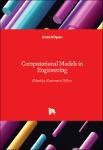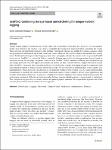Search
Author
- Jorgensen, Ed (3)
- McFadyen, Ron (3)
- Nora, El-Rashidy (3)
- Christian, Homeyer (2)
- next >
Subject
- programming (10)
- Open Access (8)
- Java (7)
- Programming (7)
- next >
Date issued
- 2020 - 2025 (293)
- 2010 - 2019 (39)
- 2000 - 2009 (2)
- 1999 - 1999 (1)
Has File(s)
- true (335)
Search Results
The book provides and discusses different examples from engineering, as well as where and how numerical methods contribute to more efficient simulation environments. There are 7 chapters in the book, covering different aspects of modelling and simulation in engineering and technology. In Chapter 1, a three-dimensional simulation technology for physical processes in concentric hydraulic brakes with a throttling-groove partly filled hydraulic cylinder is considered. Chapter 2 addresses the behavior of functionally graded solids under dynamic impact loading within the framework of linear elasticity using the parallel explicit algorithm. Chapter 3 discusses the case studies that revealed premature failures of stiffer elements prior to utilising the full capacity of more deformable eleme... |
Introductory Chapter: Recent Advances in Cryptography and Network Security, Chapter 2: A New Approximation Method for Constant Weight Coding and Its Hardware Implementation. Chapter 3: Protocol for Multiple Black Hole Attack Avoidance in Mobile Ad Hoc Networks. Chapter 4: A Survey of Machine Learning Techniques for Behavioral-Based Biometric User Authentication. |
This open access book offers an initial introduction to programming for scientific and computational applications using the Python programming language. The presentation style is compact and example-based, making it suitable for students and researchers with little or no prior experience in programming.
The book uses relevant examples from mathematics and the natural sciences to present programming as a practical toolbox that can quickly enable readers to write their own programs for data processing and mathematical modeling. These tools include file reading, plotting, simple text analysis, and using NumPy for numerical computations, which are fundamental building blocks of all programs in data science and computational science. At the same time, readers are introduced to the fun... |
This open access book presents a systematic investigation into internationally comparable data gathered in ICILS 2013. It identifies differences in female and male students’ use of, perceptions about, and proficiency in using computer technologies. Teachers’ use of computers, and their perceptions regarding the benefits of computer use in education, are also analyzed by gender.
When computer technology was first introduced in schools, there was a prevailing belief that information and communication technologies were ‘boys’ toys’; boys were assumed to have more positive attitudes toward using computer technologies. As computer technologies have become more established throughout societies, gender gaps in students’ computer and information literacy appear to be closing, although st... |
Traditional local tamper-evident logging systems use cryptographic ratchets. In previous works, we presented SealFS (from now on, SealFSv1), a system that follows a radically different approach for local tamper-evident logging based on keystream storage. In this paper, we present a new version, SealFSv2, which combines ratcheting and storage-based log anti-tamper protection. |
Sample correlations and feature relations are two pieces of information that are needed to be considered in the unsupervised feature selection, as labels are missing to guide model construction. Thus, we design a novel unsupervised feature selection scheme, in this paper, via considering the completed sample correlations and feature dependencies in a unified framework. Specifically, self-representation dependencies and graph construction are conducted to preserve and select the important neighbors for each sample in a comprehensive way. |
COVID - 19 affected severely worldwide. The pandemic has caused many causalities in a very short span. The IoT-cloud-based healthcare model requirement is utmost in this situation to provide a better decision in the covid-19 pandemic. In this paper, an attempt has been made to perform predictive analytics regarding the disease using a machine learning classifier. This research proposed an enhanced KNN (k NearestNeighbor) algorithm eKNN, which did not randomly choose the value of k. However, it used a mathematical function of the dataset’s sample size while determining the k value. The enhanced KNN algorithm eKNN has experimented on 7 benchmark COVID-19 datasets of different size, which has been gathered from standard data cloud of different countries (Brazil, Mexico, etc.). |
Frustration, which is one aspect of the field of emotional recognition, is of particular interest to the video game industry as it provides information concerning each individual player’s level of engagement. The use of non-invasive strategies to estimate this emotion is, therefore, a relevant line of research with a direct application to real-world scenarios. While several proposals regarding the performance of non-invasive frustration recognition can be found in literature, they usually rely on hand-crafted features and rarely exploit the potential inherent to the combination of different sources of information. This work, therefore, presents a new approach that automatically extracts meaningful descriptors from individual audio and video sources of information using Deep Neural N... |
Decentralised identity ecosystems offer promising solutions for a wide range of applications in the private sector and in public administration. The applications have very different requirements and regulated environments place high security requirements on the wallet and its credentials. At the same time, the smartphone market offers a fragmented range of security solutions. We investigate the security requirements of a mobile, native wallet architecture for self-sovereign users and evaluate the existing security solution building blocks for hardware-bound key storage, biometrics and features of Android and iOS operating systems. |
Fine-Grained Visual Categorization (FGVC) aims to distinguish between extremely similar subordinate-level categories within the same basic-level category. Existing research has proven the great importance of the discriminative features in FGVC but ignored the contributions for correct classification from other features, and the extracted features always contain more information about the obvious regions but less about subtle regions. In this paper, firstly, a novel module named forcing module is proposed to force the network to extract more diverse features for FGVC, which generates a suppression mask based on the class activation maps to suppress the most distinguishable regions, so as to force the network to extract other secondary distinguishable features as the final features. |










